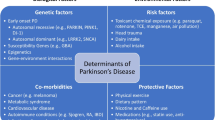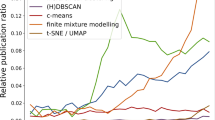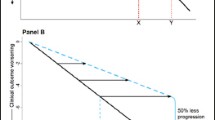Abstract
An incidence cohort of 308 multiple sclerosis patients was followed up repeatedly during at least 25 years of disease. In the patients with acute onset, multivariate survival analyses were performed and predictive models created. The endpoints DSS 6 and start of progressive disease were used. A number of variables were tested. The most important of these for prediction and therefore included in these models were: age at onset, sex, degree of remission after relapse, mono- or polyregional symptoms, type of affected nerve fibres, number of affected neurological systems. The relapse rate did not correlate with prognosis. In the predictive models, coefficients and risk ratios are provided that can be used for calculating the risk of progression and DSS 6 or to predict the median time for these endpoints in individual patients. It was also found that the risk of progression is not constant, but has a maximum a certain time after disease onset. For a patient with early onset, the risk is low in the beginning, but reaches a maximum level, which is several times higher, after about 15 years. The patient with a late onset has a much higher risk of endpoint immediately after onset, but reaches the maximum in a few years, and after that the risk decreases
Similar content being viewed by others
References
Aitkin M, Anderson D, Francis B, Hinde J (1990) Statistical modeling in GLIM. Oxford statistical science series. Oxford University Press, Oxford
Andersen O (1980) Restricted dissemination of clinically defined attacks in an MS incidence matieral. Acta Neurol Scand 62 [Suppl 77], pp 1–70
Breslow NE, Day NE (1987) Statistical methods in cancer research. In: IARC Scientific Publications No 32. Lyon, pp 131–135
Broman T, Andersen O, Bergmann L (1981) Clinical studies on MS. Acta Neurol Scand 63:6–33
Confavreux C, Aimard G, Devic M (1980) Course and prognosis of multiple sclerosis assessed by the computerized data processing of 349 patients. Brain 103:281–300
Cox DR, Oakes D (1988) Analysis of survival data. Monographs on statistics and applied probability. Chapman and Hall, London
Koch-Henriksen N (1989) An epidemiological study of multiple sclerosis. Familial aggregation, social determinants and exogenic factors. Acta Neurol Scand 80 [Suppl 124], pp 1–43
Lycke J (1993) Studies on the possible involvement of human herpes- and retroviruses in multiple sclerosis. Thesis, University of Göteborg
Poser C, Paty DW, Scheinberg L, McDonald WI, Davis FA, Ebers GC, Johnson KP, Sibley WA, Silberberg DH, Tourtellotte WW (1983) New diagnostic criteria for multiple sclerosis. Ann Neurol 13:227–231
Riise T, Grønning M, Fernández O, Lauer K, Midgard R, Minderhoud JM, Nyland H, Pálffy G, Poser S, Aarli J (1992) Early prognostic factors for disability in multiple sclerosis, a European multicenter study. Acta Neurol Scand 85:212–218
Runmarker B, Andersen O (1993) Prognostic factors in a multiple sclerosis incidence cohort with 25 years of follow-up. Brain 116:117–134
Svenningsson A, Runmarker B, Lycke J, Andersen O (1990) Incidence of MS during two fifteen-year periods in the Gothenburg region of Sweden. Acta Neurol Scand 82:161–168
The IFNB Multiple Sclerosis Study Group (1993) Interferon beta-1b is effective in relapsing-remitting multiple sclerosis. Neurology 43:655–661
Weinshenker BG, Ebers GC (1987) The natural history of multiple sclerosis. Can J Neurol Sci 14:255–261
Weinshenker BG, Bass B, Rice GPA, Noseworthy J, Carriere W, Baskerville J, Ebers GC (1989) The natural history of multiple sclerosis: a geographically based study. 2. Predictive value of early clinical course. Brain 112:1419–1428
Weinshenker BG, Rice GPA, Noseworthy JH, Carriere W, Baskerville J, Ebers GC (1991) The natural history of multiple sclerosis: a geographically based study. 3. Multivariate analysis of predictive factors and models of outcome. Brain 114:1045–1056
Author information
Authors and Affiliations
Rights and permissions
About this article
Cite this article
Runmarker, B., Andersson, C., Odén, A. et al. Prediction of outcome in multiple sclerosis based on multivariate models. J Neurol 241, 597–604 (1994). https://doi.org/10.1007/BF00920623
Received:
Revised:
Accepted:
Issue Date:
DOI: https://doi.org/10.1007/BF00920623




